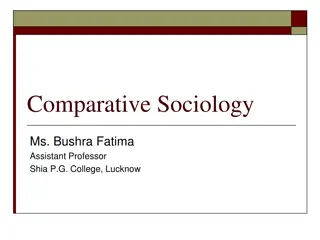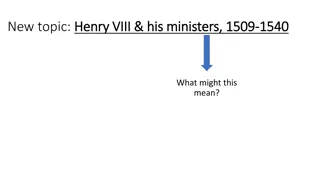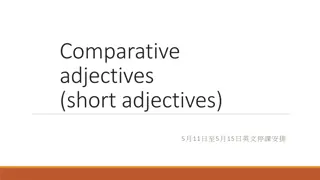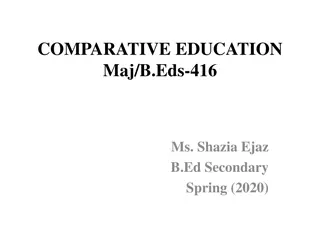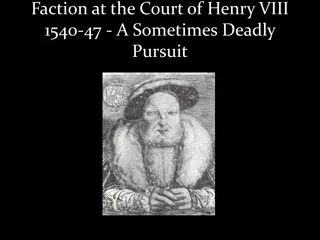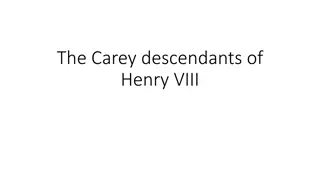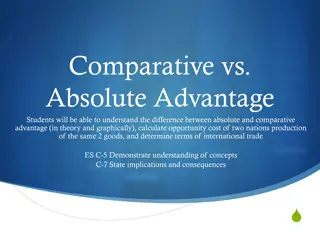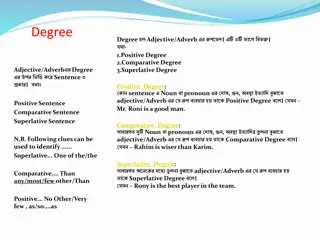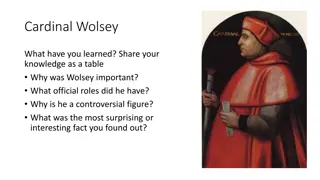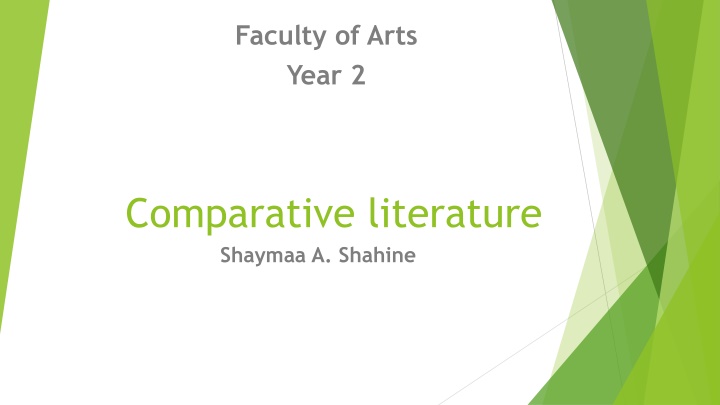
Comparative Literature Study: Cinderella in Pygmalion Contexts
Explore the comparative study of Cinderella in relation to Shaw's "Pygmalion" and Al-Hakim's version, delving into themes of empowerment, beauty, and societal roles. Discover the historical settings and character dynamics of these timeless tales.
Download Presentation

Please find below an Image/Link to download the presentation.
The content on the website is provided AS IS for your information and personal use only. It may not be sold, licensed, or shared on other websites without obtaining consent from the author. If you encounter any issues during the download, it is possible that the publisher has removed the file from their server.
You are allowed to download the files provided on this website for personal or commercial use, subject to the condition that they are used lawfully. All files are the property of their respective owners.
The content on the website is provided AS IS for your information and personal use only. It may not be sold, licensed, or shared on other websites without obtaining consent from the author.
E N D
Presentation Transcript
Faculty of Arts Year 2 Comparative literature Shaymaa A. Shahine
Codes of Conduct Phones are not allowed Start 12 to 1.30 p.m. Doors closes 12.10 p.m. What is in it for you? Listening, Reading and Critical thinking Volunteers for Reflection Tree Question Bank
A Comparative Study of Cinderella to Shaw s Pygmalion and Al-Hakim s Pygmalion
A Literary Biography of Cinderella according to Wikipedia "Cinderella" or The Little Glass Slipper, is a folk tale embodying a myth-element of unjust oppression and triumphant reward. Thousands of variants are known throughout the world. The title character is a young woman living in unfortunate circumstances, that are suddenly changed to remarkable fortune. The story of Rhodopis, recounted by the Greek geographer Strabo around 7 BC, about a Greek slave girl who marries the king of Egypt, is usually considered to be the earliest known variant of the Cinderella story. The first literary European version of the story was published in Italy by Giambattista Basile in his Pentamerone in 1634; the version that is now most widely known in the English-speaking world was published in French by Charles Perrault in Histoires ou contes du temps pass in 1697.Another version was later published by the Brothers Grimm in their folk tale collection Grimms' Fairy Tales in 1812.
Setting and Time Cinderella Shaw s Pygmalion 1- written in 1912, tell the story of English society back then A fairy tale that first appeared in the story of Rhodopis The variant in this study is based on Grimms' Fairy Tales in 1812 Al-Hakim s Pygmalion: 1- written in 1942, tells the Greek mythology of ancient times 2- The reception room of Pygmalion s house 2- London: Professor Higgins s house The house of Cinderella s father, the ball room in the prince s palace
Characters Cinderella She has lost her mom and dad Her stepmother takes advantage of her She is courageous She is optimistic no matter how gloomy her circumstances Her Inner beauty results in her survival Eliza She has lost her mom Her father takes advantage of her She is courageous She has a dream and goes after it Her inner beauty leads her way toward a change of appearance that would reveal her reality Galatea She has no parents Pygmalion takes advantage of her She is anxious, but never courageous She is not optimistic Her apparent beauty is her only skill in life
Themes Nature plays what role in Cinderella, Eliza and Galatea Grace; who is grateful and to whom? Morality; what morals can readers draw from Cinderella, Shaw s Pygmalion, Al-Hakim s Pygmalion? Power of Change through language plays a vital role in Shaw s Pygmalion, what other kinds of power made change vibrant in the lives of Cinderella and Galatea? Loneliness Art for Art s sake or Art for Life s sake
References Bernard Shaw Snubs England and Amuses Germany." The New York Times, 30 November 1913 Pygmalion at the Internet Broadway Database Pygmalion stories & art: "successive retellings of the Pygmalion story after Ovid's Metamorphoses" Pygmalion at Project Gutenberg The Story Of "Pygmalion."". The Times. 19 March 1914. Retrieved 19 September 2016 . Evans, T.F. (ed.) (1997). George Bernard Shaw (The Critical Heritage Series). "The Instinct of An Artist: Shaw and the Theatre." Catalog for "An Exhibition from The Bernard F. Burgunder Collection," 1997. Cornell University Library "The Project Gutenberg E-text of Pygmalion, by George Bernard Shaw"



